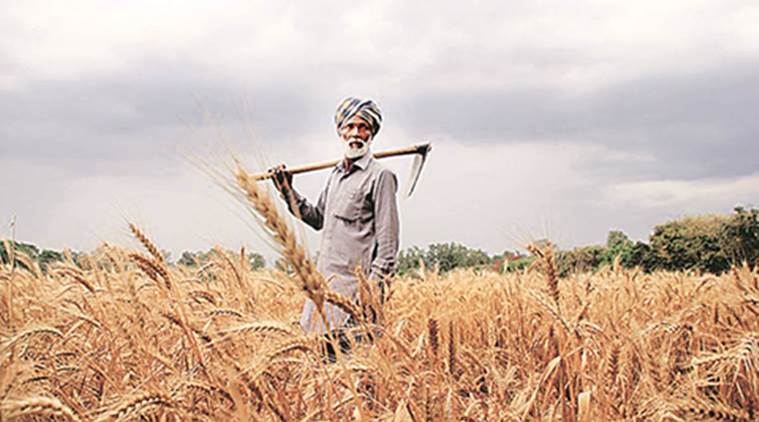Wheat weathers rain, hailstorm, to produce record ……
Wheat weathers rain, hailstorm, to produce record ……
Despite reports that recent rain and hailstorm in key growing States have impacted the wheat crop, the Ministry of Agriculture has claimed that the wheat output might cross 100 million tonnes, an all-time high level.As per agriculture data, sowing of wheat, the main rabi (winter) crop, is almost complete and the acreage under the crop has reached 298.47 lakh hectares till last week, slightly lower than 299.84 lakh hectares in one year ago.“As compared to 622.12 lakh hectares planted in 2017-18, the sowing covered only 591.64 lakh hectares during rabi crop season this year. In other words, 30 lakh hectares less planted this year during rabi crop season,” the Agriculture Ministry said.On the other hand, farmers have claimed that recent hailstorm and untimely rain damaged the quality of wheat crop, pulses, potatoes and onions. Wheat production stood at a record 99.70 million tonne in 2017-18 crop year (July-June). The final assessment is yet to be made on the damage of rabi crops due to hailstorm and untimely rain.“No negative impact of rain on the wheat crop reported so far. There may be some minor impact in patches,” Indian Council of Agriculture Research (ICAR) Director General Trilochan Mohapatra said.According to Mohapatra, the extended winter has been good for the crop as low temperature will boost the crop growth, he said while cautioning that the crop could be affected if there is rain or hailstorm in the coming weeks.“Wheat sowing is complete. The acreage under the crop is slightly lower than last year, but we expect higher yields and overall production will definitely cross 100 million tonnes,” Mohapatra said.On other rabi crops, the ICAR chief said that gram (chana) and mustard crops’ condition is good. There is a possibility of bumper rabi crop output in 2018-19. The Centre will soon announce production estimates for rabi crops of 2018-19.The acreage under pulses dropped to 151.6 lakh hectare, a little over six per cent lower than in the same period in 2017-18. The drop is mainly due to less sowing of gram – the main rabi pulse crop – in Maharashtra, Andhra Pradesh, Chhattisgarh, Haryana, Karnataka and Gujarat. Though there was a slight increase in pulses acreage in Madhya Pradesh, Jharkhand, West Bengal and Tamil Nadu, it wasn’t enough to pull up the numbers. Two pulse varieties that have reported higher sowing this year were green peas and kulthi, which are substantially higher than in the same period last year.Another group of crops hit by drought conditions is coarse cereals. As per data, there is less cultivation of oilseed in Maharashtra and Karnataka that led to a 14 per cent fall in acreage, which is 47 lakh hectare as compared to 54.63 lakh hectare in the corresponding period in the previous year.




